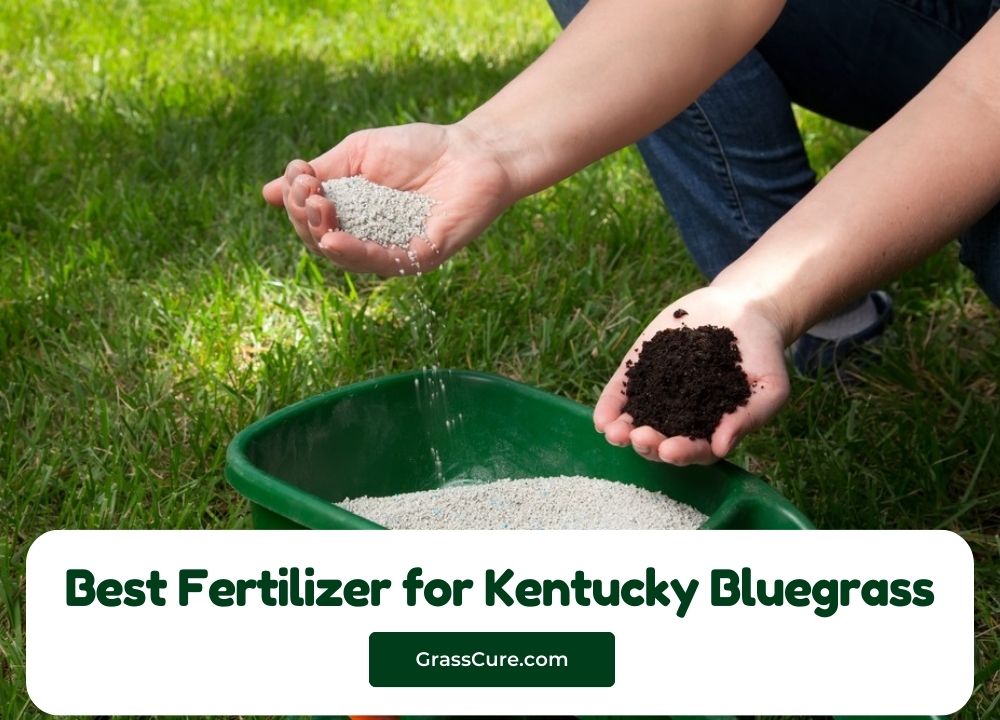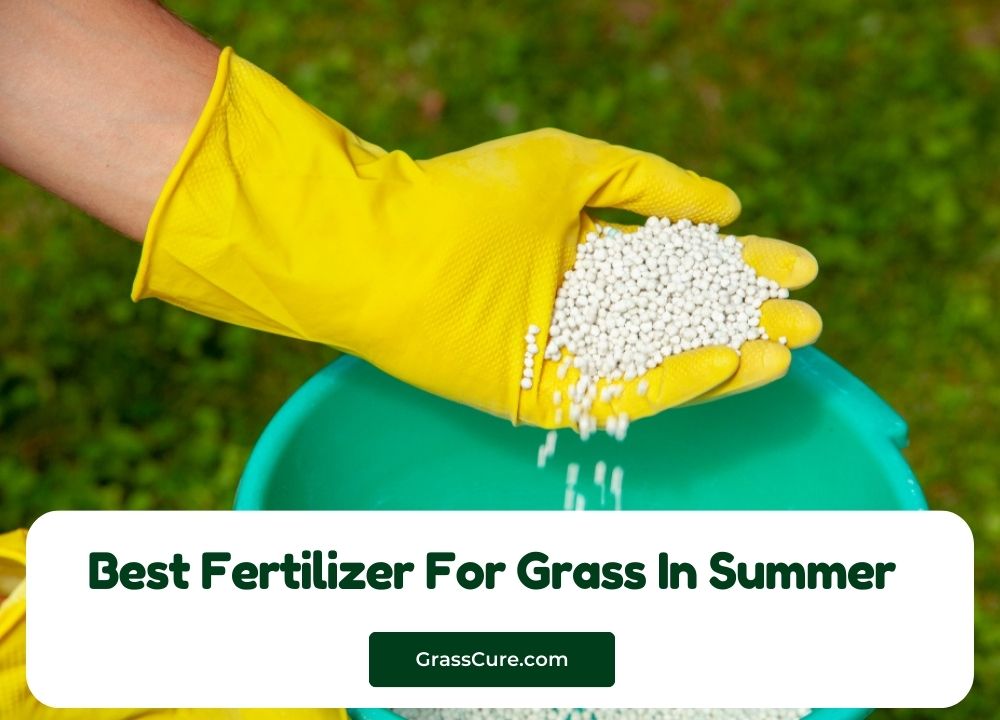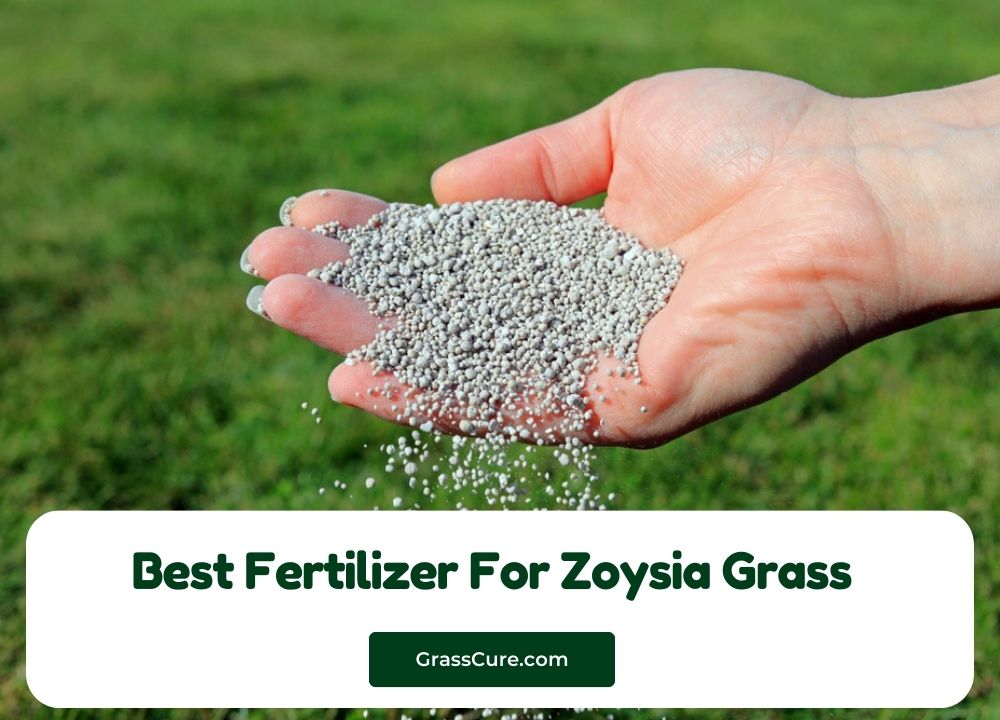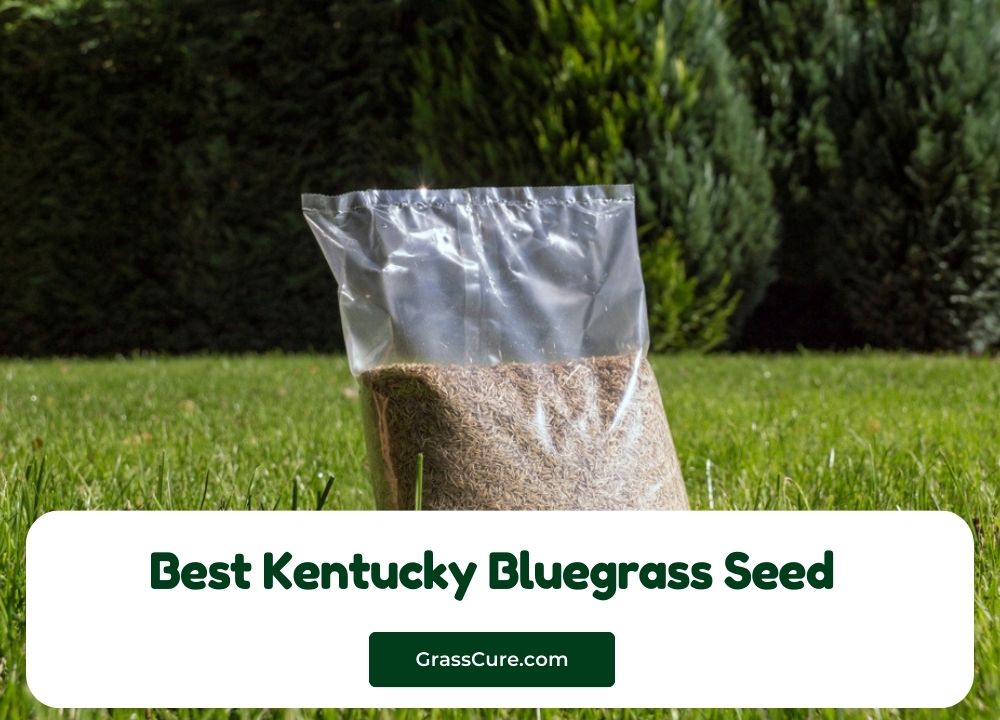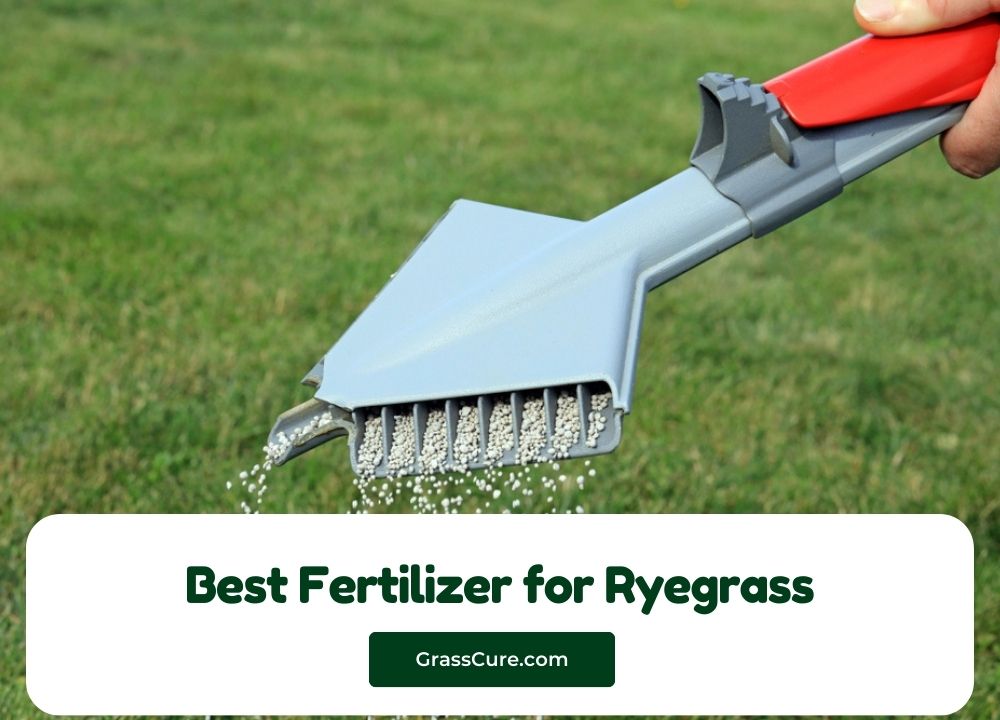Kentucky Bluegrass is a popular cool-season grass known for its fine texture, vibrant blue-green color, and durability, making it a favorite for lawns and sports fields. However, maintaining its lush appearance requires proper care, especially when it comes to fertilization. Without the right nutrients, Kentucky Bluegrass can suffer from slow growth, thinning, and discoloration. In this article, we’ll explore the best fertilizers available to keep your Kentucky Bluegrass healthy and thriving, while also discussing key factors like soil testing and fertilization schedules to ensure your lawn reaches its full potential.
Contents
Understanding Fertilizer Basics for Kentucky Bluegrass
Fertilizing Kentucky Bluegrass correctly is essential for maintaining its rich color, density, and overall health. To do so, it’s important to understand the different types of fertilizers, the nutrients Kentucky Bluegrass needs, and how to tailor fertilizer applications to your lawn’s specific requirements.
Types of Fertilizers
- Organic vs. Synthetic Fertilizers:
- Organic fertilizers, derived from natural materials, release nutrients slowly and improve soil health over time. They are eco-friendly but may take longer to show visible results.
- Synthetic fertilizers, on the other hand, offer a quicker release of nutrients and more immediate results, but they don’t improve the soil structure in the long term.
- Slow-Release vs. Quick-Release Formulas:
- Slow-release fertilizers release nutrients gradually, providing steady nourishment over time and reducing the risk of burning the grass.
- Quick-release fertilizers supply nutrients rapidly, leading to faster growth but with a higher risk of over-fertilization and damage if not carefully managed.
- Granular vs. Liquid Fertilizers:
- Granular fertilizers are easy to apply and typically slow-release, making them a great option for long-term feeding.
- Liquid fertilizers offer faster absorption and are ideal for giving your lawn a quick boost, though they may require more frequent applications.
Nutritional Requirements for Kentucky Bluegrass
Kentucky Bluegrass thrives when it receives the right balance of essential nutrients:
- Nitrogen (N): Promotes lush, green growth. Kentucky Bluegrass is particularly nitrogen-hungry and benefits from regular nitrogen applications.
- Phosphorus (P): Important for root development, especially in newly planted lawns.
- Potassium (K): Improves overall lawn health, helping the grass resist diseases and withstand stress from drought and temperature changes.
Look for fertilizers with an N-P-K ratio suited to your lawn’s needs, with higher nitrogen levels for established Kentucky Bluegrass.
Soil Testing
Before selecting a fertilizer, it’s crucial to conduct a soil test. This helps identify any nutrient deficiencies and ensures you’re applying the right fertilizer for optimal growth. Soil tests measure pH levels and nutrient content, allowing you to adjust the fertilizer application to suit your lawn’s specific conditions, ensuring you don’t over- or under-fertilize.
Fertilization Schedule for Kentucky Bluegrass
To keep Kentucky Bluegrass healthy and lush, it’s important to follow a strategic fertilization schedule that aligns with its growth patterns. Since Kentucky Bluegrass is a cool-season grass, it thrives during specific times of the year and requires tailored fertilization to maximize growth and resilience.
When to Fertilize Kentucky Bluegrass
- Early Spring (March – April)
- Purpose: Promote early green-up and recovery from winter dormancy.
- Application: Use a balanced fertilizer with a focus on nitrogen (N). A slow-release formula helps provide steady nutrients as the grass comes out of dormancy.
- Late Spring (May – June)
- Purpose: Encourage strong root development and prevent summer stress.
- Application: A second application of fertilizer with moderate nitrogen and some potassium (K) helps the grass establish a strong foundation for the hot summer months.
- Late Summer/Early Fall (August – September)
- Purpose: Stimulate growth after summer heat stress and prepare the lawn for cooler weather.
- Application: Apply a fertilizer with a higher nitrogen content. Fall is a critical growth period, and feeding during this time ensures the grass thickens and repairs any summer damage.
- Late Fall (October – November)
- Purpose: Prepare the lawn for winter dormancy and boost root strength.
- Application: Use a slow-release fertilizer with lower nitrogen but higher potassium. This promotes root health over the winter and helps the lawn green up faster in spring.
Frequency of Application
- Apply fertilizer about 3-4 times per year for optimal results. Each application should be spaced approximately 6-8 weeks apart.
- Avoid fertilizing during the summer (July) when Kentucky Bluegrass is stressed by heat, as the high temperatures may cause fertilizer burn or overstress the grass.
Amount of Fertilizer to Use
- General guidelines suggest applying 1 pound of nitrogen per 1,000 square feet during each application, but always follow the manufacturer’s instructions on the fertilizer packaging for precise measurements.
- Over-fertilization can lead to excessive growth, which demands more frequent mowing and increases the risk of disease.
Top Fertilizer for Kentucky Bluegrass
Scotts Turf Builder Lawn Food
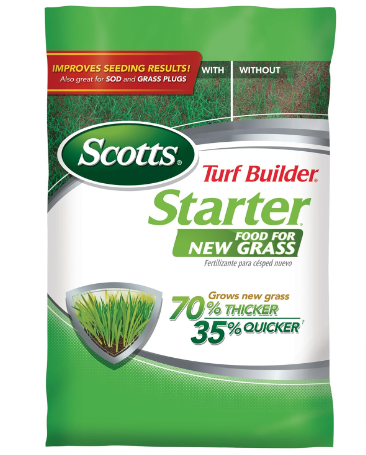
Overview:
Scotts Turf Builder Lawn Food is one of the most popular and effective fertilizers for maintaining healthy Kentucky Bluegrass. Its unique formula is designed to build strong, deep roots and improve the lawn’s ability to absorb water and nutrients.
Key Features:
- Slow-Release Nitrogen Formula: This fertilizer gradually releases nitrogen over time, providing your lawn with consistent nutrients and preventing rapid growth spikes.
- Promotes Thick, Green Growth: By feeding the grass with essential nutrients, Scotts Turf Builder helps fill in weak or bare spots, leading to a fuller and more vibrant lawn.
- Improves Water Retention: The formula enhances your lawn’s ability to absorb water, making it more resistant to drought and other environmental stresses.
- Safe for All Grass Types: Scotts Turf Builder is safe to use on Kentucky Bluegrass and other grass types without the risk of burning or damaging the turf when used as directed.
Why It’s Great for Kentucky Bluegrass:
- Kentucky Bluegrass benefits from slow, steady feeding, and Scotts Turf Builder Lawn Food provides just that. The slow-release nitrogen allows the grass to grow thicker and stronger without the risk of over-fertilization.
- It also encourages a deep root system, which is particularly important for Kentucky Bluegrass, as it helps the grass withstand drought and thrive even in tough conditions.
Application Instructions:
- Apply any time during the growing season, typically 3-4 times per year, following the fertilization schedule for Kentucky Bluegrass (spring, late spring, late summer, and fall).
- Use a broadcast spreader to ensure even distribution across the lawn.
- Water the lawn after application to activate the fertilizer and aid in nutrient absorption.
Amazon Rating: ⭐⭐⭐⭐
- Customers praise its ease of use and visible results in a short period, with many noticing thicker, greener grass within a few weeks.
Scotts Turf Builder Lawn Food is an excellent choice for anyone looking to maintain a lush, healthy Kentucky Bluegrass lawn with minimal effort. Its reliable performance and balanced nutrient supply make it one of the top fertilizers on the market.
Milorganite 0636 Organic Nitrogen Fertilizer
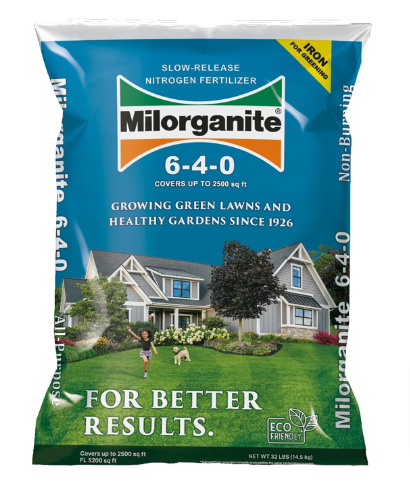
Overview:
Milorganite 0636 Organic Nitrogen Fertilizer is a renowned, environmentally friendly option for homeowners looking to enhance the health of their Kentucky Bluegrass lawns. Made from recycled organic matter, this fertilizer provides a natural source of nutrients that promote vigorous growth while improving soil quality.
Key Features:
- Organic Formula: Composed of biosolids, Milorganite is a sustainable fertilizer that contributes to a greener environment by recycling organic waste into valuable nutrients for your lawn.
- Slow-Release Nitrogen: Milorganite delivers nitrogen gradually, reducing the risk of nutrient runoff and lawn burn, making it ideal for long-term health.
- No Chemical Additives: This fertilizer is free of harmful chemicals and synthetic ingredients, making it safe for pets, children, and the environment.
- Improves Soil Structure: The organic matter in Milorganite helps enhance soil aeration and water retention, creating an optimal growing environment for Kentucky Bluegrass.
Why It’s Great for Kentucky Bluegrass:
- The slow-release nitrogen supports consistent growth and color without overwhelming the grass, which is particularly beneficial for Kentucky Bluegrass, known for its nitrogen requirements.
- Organic fertilizers like Milorganite encourage beneficial microbial activity in the soil, fostering a healthier ecosystem that contributes to improved lawn vitality.
- Ideal for both established lawns and new seedlings, it aids in root development and helps with drought resistance.
Application Instructions:
- Frequency: Apply Milorganite every 8-10 weeks during the growing season for best results, typically around 2-4 times per year.
- Application Rate: Use about 5-10 pounds per 1,000 square feet, depending on the specific needs of your lawn. Always refer to the label for detailed instructions.
- Method: Spread the fertilizer evenly using a broadcast spreader, and water the lawn lightly afterward to help activate the nutrients.
Amazon Rating: ⭐⭐⭐⭐⭐
- Users often commend its effectiveness in improving lawn health and color, with many reporting lush, green grass and positive soil improvement results.
Milorganite 0636 Organic Nitrogen Fertilizer is an excellent choice for those seeking a natural and effective way to nourish their Kentucky Bluegrass lawns. Its organic composition, combined with its reliable slow-release formula, makes it a top pick for environmentally conscious gardeners.
GreenView Fairway Formula Fertilizer
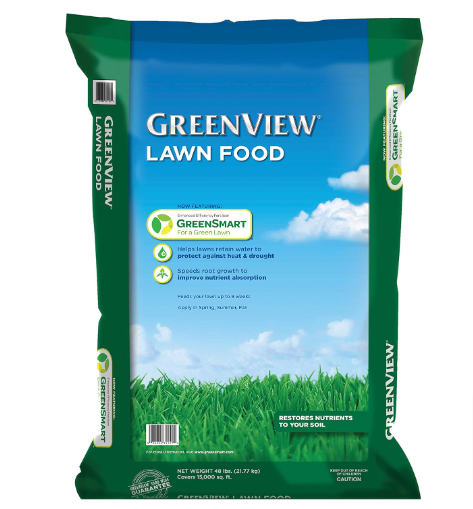
Overview:
GreenView Fairway Formula Fertilizer is specially designed for cool-season grasses like Kentucky Bluegrass, making it an excellent choice for homeowners who want to achieve a lush, healthy lawn. Its carefully balanced formula supports rapid growth and enhanced color, ensuring your grass remains vibrant throughout the growing season.
Key Features:
- High Nitrogen Content: This fertilizer contains a significant amount of nitrogen, which is essential for promoting lush, green growth and thickening the grass.
- Enhanced Nutrient Delivery: The formula is designed to deliver nutrients efficiently to the grass, allowing for quick absorption and visible results in a short period.
- Controlled Release: GreenView Fairway Formula provides a controlled release of nutrients, reducing the risk of burning and ensuring a steady supply of food for the grass.
- Promotes Disease Resistance: This fertilizer not only encourages growth but also strengthens the grass, making it more resilient to diseases and environmental stressors.
Why It’s Great for Kentucky Bluegrass:
- The high nitrogen levels are particularly beneficial for Kentucky Bluegrass, which thrives with regular nitrogen applications. This fertilizer helps the grass establish a thick, carpet-like appearance.
- GreenView Fairway Formula is formulated to provide essential nutrients during the critical growing seasons, ensuring that the grass remains healthy and vibrant.
- Its controlled release mechanism means you can apply it less frequently while still achieving outstanding results.
Application Instructions:
- Timing: Apply in early spring and again in late summer or early fall to provide nutrients when the grass is actively growing.
- Application Rate: Use approximately 1 pound of nitrogen per 1,000 square feet of lawn, adjusting based on specific lawn needs and soil tests.
- Method: Utilize a broadcast spreader for even distribution across the lawn, followed by watering to help activate the fertilizer.
Amazon Rating: ⭐⭐⭐⭐
- Customers frequently highlight its effectiveness in promoting quick green-up and overall lawn health, with many noting improved density and color within a few weeks of application.
GreenView Fairway Formula Fertilizer is an excellent choice for Kentucky Bluegrass, providing the necessary nutrients to promote lush growth and resilience. Its effective formula and ease of use make it a popular option for homeowners looking to maintain a beautiful lawn with minimal hassle.
Simple Lawn Solutions 16-4-8 Lawn Food
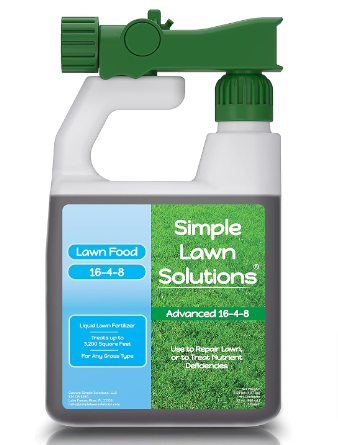
Overview:
Simple Lawn Solutions 16-4-8 Lawn Food is a versatile liquid fertilizer that offers a balanced nutrient profile ideal for promoting the health and vitality of Kentucky Bluegrass. This high-quality formula is designed to deliver essential nutrients quickly, ensuring that your lawn thrives throughout the growing season.
Key Features:
- Balanced NPK Ratio: With a nitrogen-phosphorus-potassium (N-P-K) ratio of 16-4-8, this fertilizer provides a strong boost of nitrogen for lush growth, phosphorus for root development, and potassium for overall health and stress resistance.
- Liquid Formula: Being a liquid fertilizer, it allows for quick absorption and immediate results, making it perfect for homeowners seeking rapid greening and revitalization of their lawns.
- Easy to Use: Comes with a convenient hose-end sprayer for simple application. Just attach it to your garden hose, and you’re ready to fertilize without the mess of granules.
- Versatile Application: Suitable for all types of grass, including Kentucky Bluegrass, and can be used on lawns, gardens, and landscapes.
Why It’s Great for Kentucky Bluegrass:
- The high nitrogen content is ideal for Kentucky Bluegrass, which thrives on regular nitrogen applications to promote dense, green growth.
- The quick absorption of the liquid formula means your lawn will show noticeable improvements shortly after application, making it great for urgent lawn care needs.
- This fertilizer also contains beneficial micronutrients, helping to enhance soil health and support a robust root system.
Application Instructions:
- Frequency: Apply every 4-6 weeks during the growing season for optimal results, typically spring through early fall.
- Application Rate: Use according to the instructions on the bottle, typically around 1 ounce per 1,000 square feet for standard applications, but refer to the specific directions based on your lawn’s condition.
- Method: Attach the hose-end sprayer, set it to the desired rate, and apply evenly across the lawn, ensuring thorough coverage.
Amazon Rating: ⭐⭐⭐⭐⭐
- Users often rave about its effectiveness in quickly revitalizing their lawns, with many noting significant improvements in color and density after just one application.
Simple Lawn Solutions 16-4-8 Lawn Food is an excellent choice for Kentucky Bluegrass, providing a quick and efficient way to nourish your lawn. Its balanced formula and ease of use make it a top option for homeowners looking to achieve a vibrant, healthy lawn with minimal effort.
Jonathan Green Lawn Fertilizer
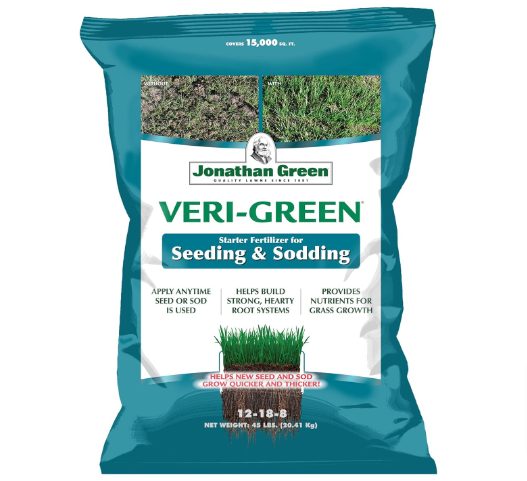
Overview:
Jonathan Green Green-Up Lawn Fertilizer is a premium fertilizer specifically formulated for cool-season grasses like Kentucky Bluegrass. This product is designed to deliver exceptional results, promoting lush green growth while enhancing the overall health of your lawn.
Key Features:
- High Nitrogen Content: With a robust nitrogen formula, this fertilizer promotes deep green color and vigorous growth, making it particularly effective for Kentucky Bluegrass.
- Iron-Enhanced Formula: The inclusion of iron helps to enrich the color of the grass, enhancing its vibrant appearance and giving it a lush, healthy look.
- Controlled-Release Technology: This fertilizer utilizes controlled-release nitrogen to ensure that nutrients are available to the grass over an extended period, reducing the risk of lawn burn and providing a steady supply of nutrients.
- Versatile Use: Suitable for use on all grass types, this fertilizer can also benefit other areas of your landscape, including flower beds and gardens.
Why It’s Great for Kentucky Bluegrass:
- The high nitrogen and iron content are particularly beneficial for Kentucky Bluegrass, which thrives on consistent feeding to maintain its rich color and density.
- The controlled-release feature ensures that the lawn receives the necessary nutrients without overwhelming it, promoting a healthy, resilient turf.
- Many users report that this fertilizer leads to quick greening and improves the overall health of the grass, making it a favorite among homeowners.
Application Instructions:
- Timing: Apply during the early spring and again in late summer or early fall for the best results, coinciding with the active growth periods of Kentucky Bluegrass.
- Application Rate: Use approximately 3-4 pounds per 1,000 square feet for optimal coverage, following the instructions on the product label for specific guidance.
- Method: Spread evenly using a broadcast spreader, ensuring consistent application across your lawn. Water thoroughly after application to activate the fertilizer.
Amazon Rating: ⭐⭐⭐⭐⭐
- Customers consistently praise Jonathan Green for its effectiveness in revitalizing lawns, with many reporting noticeable improvements in color and thickness within weeks of application.
Jonathan Green-Up Lawn Fertilizer is an excellent choice for anyone looking to achieve a lush, green Kentucky Bluegrass lawn. Its effective formula, combined with the benefits of controlled-release technology and iron enhancement, makes it a standout option for lawn care enthusiasts.
Additional Considerations for Kentucky Bluegrass Care
To maintain a healthy and vibrant Kentucky Bluegrass lawn, it’s essential to consider several additional factors beyond fertilization. Proper watering, weed control, aeration, and overseeding all play significant roles in promoting a lush, resilient lawn.
1. Watering Recommendations
- Frequency and Depth: Kentucky Bluegrass requires about 1 to 1.5 inches of water per week, including rainfall. It’s best to water deeply and infrequently, allowing the soil to dry slightly between watering sessions.
- Timing: Water in the early morning to reduce evaporation and fungal diseases. Avoid watering in the evening, as this can lead to prolonged moisture on the grass and increase disease risk.
2. Weed Control
- Pre-emergent Herbicides: Apply pre-emergent herbicides in early spring to prevent weeds like crabgrass and foxtail from germinating. Timing is crucial—typically when soil temperatures reach about 50°F.
- Post-emergent Herbicides: Use post-emergent herbicides for existing weeds. Target specific weeds when they are actively growing for best results. Always follow the manufacturer’s guidelines for application rates and timing.
- Cultural Practices: Maintain a thick, healthy lawn through proper fertilization and watering, as this helps to outcompete weeds and minimizes their establishment.
3. Aeration and Overseeding
- Aeration: Aerate your lawn in the fall (or spring) to alleviate soil compaction and improve nutrient and water penetration. This practice enhances root development and promotes a healthier lawn.
- Overseeding: Consider overseeding in the fall to fill in bare spots and improve lawn density. Choose high-quality Kentucky Bluegrass seed and apply it after aeration to maximize seed-to-soil contact.
4. Mowing Practices
- Height of Cut: Set your mower to a height of 2.5 to 4 inches for Kentucky Bluegrass. Taller grass blades promote deeper roots and help shade the soil, reducing weed competition.
- Frequency: Mow regularly to maintain an even height. Avoid removing more than one-third of the grass height at a time to prevent stress and promote healthy growth.
5. Pest Management
- Monitoring: Regularly inspect your lawn for signs of pests, such as grubs or chinch bugs. Early detection is key to managing infestations effectively.
- Integrated Pest Management (IPM): Use a combination of cultural, biological, and chemical methods to manage pests while minimizing harm to beneficial insects and the environment.
Conclusion
Maintaining a healthy Kentucky Bluegrass lawn requires a comprehensive approach that includes proper fertilization, watering, weed control, and ongoing lawn care practices. By understanding the unique needs of Kentucky Bluegrass and utilizing high-quality fertilizers like Scotts Turf Builder, Milorganite, GreenView Fairway Formula, Simple Lawn Solutions 16-4-8, and Jonathan Green Green-Up, you can provide your lawn with the essential nutrients it needs to thrive.
In addition to fertilization, implementing practices such as regular mowing, aeration, overseeding, and effective pest management will contribute to a vibrant and resilient lawn. Remember to monitor soil moisture levels, apply herbicides as needed, and adjust your care routine according to seasonal changes.
With the right strategies and products, you can achieve a lush, green, and healthy Kentucky Bluegrass lawn that enhances the beauty of your outdoor space. By investing time and effort into proper lawn care, you’ll enjoy the rewards of a stunning lawn that serves as a welcoming backdrop for outdoor activities and family gatherings.
FAQ
1. How often should I fertilize my Kentucky Bluegrass lawn?
You should fertilize your Kentucky Bluegrass lawn about 3-4 times a year. Apply fertilizer in early spring, late spring, late summer, and again in late fall for optimal growth and health.
2. What is the best time to apply fertilizer?
The best times to apply fertilizer are in early spring and late summer when Kentucky Bluegrass is actively growing. Avoid fertilizing during the hot summer months to prevent stress on the grass.
3. How much water does Kentucky Bluegrass need?
Kentucky Bluegrass requires about 1 to 1.5 inches of water per week, including rainfall. It’s best to water deeply and infrequently, allowing the soil to dry slightly between watering sessions.
4. What is the ideal mowing height for Kentucky Bluegrass?
The ideal mowing height for Kentucky Bluegrass is between 2.5 to 4 inches. Keeping the grass taller promotes deeper root growth and helps reduce weed competition.
5. Can I use organic fertilizers on my Kentucky Bluegrass?
Yes, organic fertilizers, such as Milorganite, are excellent choices for Kentucky Bluegrass. They provide essential nutrients while improving soil health and structure over time.
6. What should I do if my lawn has bare spots?
For bare spots, consider overseeding in the fall after aerating the soil. This helps ensure good seed-to-soil contact and encourages new growth in those areas.
7. How can I control weeds in my Kentucky Bluegrass lawn?
To control weeds, apply pre-emergent herbicides in early spring to prevent weed germination and post-emergent herbicides for existing weeds. Maintaining a healthy lawn through proper fertilization and watering also helps outcompete weeds.
8. How do I know if my soil needs nutrients?
Conduct a soil test to determine the nutrient levels and pH of your soil. This will help you understand any deficiencies and guide your fertilization strategy.
9. Can I apply fertilizer and herbicide at the same time?
It is generally not recommended to apply fertilizer and herbicide simultaneously, as herbicides can hinder the absorption of nutrients. It’s best to apply them separately, allowing time between applications for the best results.
10. What are some signs of nutrient deficiency in Kentucky Bluegrass?
Signs of nutrient deficiency include yellowing grass, stunted growth, and thin or bare patches. If you notice these symptoms, consider conducting a soil test and adjusting your fertilization strategy accordingly.
